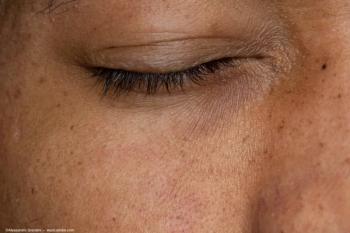
GenEditBio doses first patient in investigator-initiated trial of GEB-101 for TGFBI corneal dystrophy
Key Takeaways
- GenEditBio's GEB-101 targets TGFBI corneal dystrophy using CRISPR-Cas genome editing technology, delivered through a proprietary protein delivery vehicle.
- Preclinical studies in non-human primates demonstrated GEB-101's high safety profile and minimal off-target effects after intrastromal injection.
TGFBI corneal dystrophy is a group of genetic eye disorders caused by mutations in the TGFBI gene, resulting in abnormal protein buildup in the stromal layer of the cornea.
GenEditBio Limited has announced the first patient has been dosed in an investigator-initiated trial (IIT) of GEB-101, an in vivo genome editing program for TGFBI
TGFBI corneal dystrophy is a group of genetic eye disorders caused by mutations in the TGFBI gene, resulting in abnormal protein buildup in the stromal layer of the cornea. Current treatment options include phototherapeutic keratectomy and corneal transplantation.
According to the company, preclinical assessment in non-human primates demonstrated that GEB-101 was well-tolerated after local intrastromal injection and had a high safety profile with “virtually undetectable” off-target effects.
GEB-101 is based on the CRISPR-Cas genome editing technology that targets a particular locus in the mutated TGFBI gene. GEB-101 is encapsulated in the form of RNP in an engineered protein delivery vehicle (PDV), a proprietary in vivo delivery system developed by GenEditBio.
The IIT of GEB-101 is an open-label, dose-escalation clinical study to investigate the tolerability of GEB-101 when combined with standard treatment phototherapeutic keratectomy in adults with corneal dystrophy.
Zongli Zheng, PhD, chairman and co-founder of GenEditBio, commented on the trial in a press release from the company.
“We are proud and honored to announce that we have initiated the world’s first clinical study of an in vivo genome editing investigational therapy for corneal dystrophy. This key milestone represents years of effort in technology platform development and dedication from our world-class research team and clinical partners,” said Zheng. “We stand at the frontier of a new era and recognize the transformative potential of this moment is not just for the company but for the entire field of genetic medicine because the technology has the potential to extend far beyond corneal dystrophy.”
References:
GenEditBio announces first patient dosed in investigator-initiated trial of GEB-101, world’s first in vivo CRISPR-Cas RNP-based genome editing investigational therapy for TGFBI corneal dystrophy. Published June 6, 2025. Accessed June 9, 2025.
https://www.geneditbio.com/newsinfo/8412946.html
Newsletter
Don’t miss out—get Ophthalmology Times updates on the latest clinical advancements and expert interviews, straight to your inbox.


















































.png)


